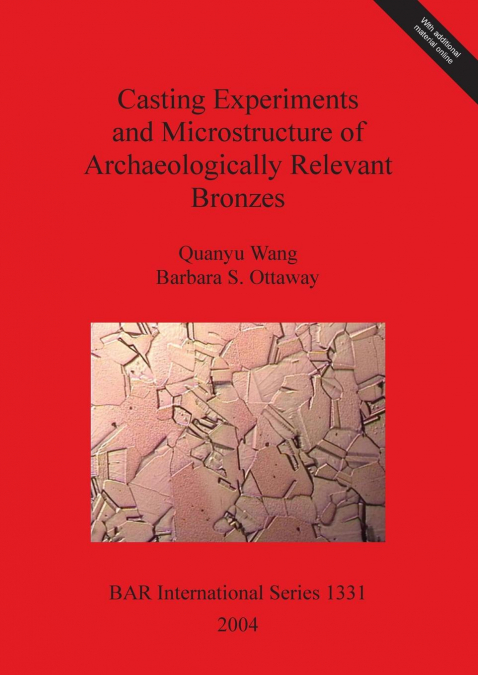
Barbara S. Ottaway / Barbara SOttaway / Quanyu Wang
Compositional data on bronze artefacts of the European Chalcolithic and Bronze Age are now quite numerous. This study differs in that it indicates how the bronzes were made: hammered into shape or cast, the moulds, the cooling processes, and after casting techniques. The authors focus on the microstructure and behaviour of archaeologically relevant alloys cast with materials likely to have been accessible in the Chalcolthic and Early Bronze Age of Europe. In order to compile a reference collection for the determination of ancient production methods of cast bronze artefacts, a series of casting experiments with archaeologically relevant alloys was carried out in the University of Sheffield. Bronze flat axes, characteristic of the European Chalcolithic to Bronze Age periods, were cast in moulds of sand, clay and bronze. The composition of the bronze, the moulding material and the cooling method after casting were systematically varied under controlled conditions. The microstructure, dendritic arm spacing or grain size and microhardness of the cast metals were studied on each casting. The malleability of the metals was also investigated by cold-rolling and annealing processes. All figures and a selection of photomicrographs are printed in black and white in this volume. They are reproduced in colour in the online download. There is one plate of colour photomicrographs in chapter 9. The complete series of colour photomicrographs for bronzes cast in sand moulds is given in appendix 2, that for bronzes cast in clay moulds is in appendix 3 and that for bronzes cast in bronze moulds is in appendix 4. The photomicrographs of the series of cold-working and annealing are given in appendix 5. All sample numbers discussed in this volume, with their composition and cooling regimes, are given in appendix 6.